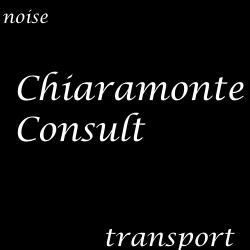

Introduction
Sound, noise and quiet
Definitions and selection criteria
Health benefits of quiet & biodiversity
The economic value of quiet areas
Lessons learned from commitments by MS and other competent authorities
Methods for identifying quiet areas
Recommendations and Conclusions
More on:
- references & useful documents and links
- health effects
- quiet facades
- protection and monitoring
Disclaimer: this site is based on the published EEA document, but not identical. Over time the differences will increase as more recent material will be added to this site by Chiaramonte Consult. Please send your comments and suggestions for extensions and improvment to info@quietareas.eu.
References
and further reading
Alvarsson, J.J., Wiens, S., and
Axelsson,
Ö. (2012). The ISO 12913 series on soundscape: An update, May
Axelsson,
Ö. (Ed.). (2011). Designing Soundscape
for Sustainable Urban Development.
EC. (1996). Future
Noise Policy,
European Commission, Green Paper. COM(96) 540.
EC.
(2002). Directive 2002/49/EC of the European Parliament and of the
Council of
25 June 2002 relating to the assessment and management of environmental
noise. Official Journal of the European
Communities,
45, 12–25.
EC.
(2011). Report from the Commission to the
European Parliament and the Council: on the Implementation of the
Environmental
Noise Directive in accordance with Article 11 of Directive 2002/49/EC.
COM(2011) 321.
de Jong, R.G.(1998). Assessment method for quiet areas. Report on survey study (in Dutch). TNO report 98.027, Leiden
Gidlöf-Gunnarsson, A., & Öhrström, E. (2007). Noise and well-being in urban residential environments: The potential role of perceived availability to nearby green areas. Landscape and Urban Planning, 83, 115-126.
Health Council of the
Netherlands (2006). Quiet Areas and Health (Stille gebieden en
gezondheid). Den Haag. English Summary
Kaplan,
S. (1995). The restorative benefits of nature: Toward an integrative
framework.
Journal of Environmental Psychology,
15, 169–182.
Kephalopoulos,
S., Paviotti, M., and Anfosso-Lédée, F. (2012). Common
Noise Assessment Methods in
Klaeboe, R. (2011).
Environmental exposure -- Annoyance relationships in black and gray
urban areas. Icben 2011, London.
Milieu.
(2010). Final Report on Task 1, Review of
the Implementation of Directive 2002/49/EC on Environmental Noise, May
2010.
Miller, N.P (2001). Effects of military aircraft noise overflights on recreational users of US national parks. Internoise 2001, The Hague, Netherlands
Morinaga,M
Aono,S Kuwano, S (2004), A study of sound environment in urban
parks, ICA2004, Kyoto
Öhrström, E., Skånberg, A., Svensson, H., & Gidlöf-Gunnarsson, A. (2006). Effects of road traffic noise ant the benefit of access to quietness. Journal of Sound and Vibration, 295, 40-59.
Payne,
S.R. (2009). Producing a scale to measure the restorativeness of urban
park soundscapes. Internoise 2009, Ottawa, Canada. Paper IN09-722
Ulrich,
R.S. (1984). View through a window may influence recovery from surgery.
Science, 224,
420–421.
Van den Berg, G.P. (2009) The need for quiet in Amsterdam: a survey In: Euronoise 2009. Edinburgh, Scotland. Paper 0064
WHO.
(2000). Guidelines for Community Noise.
WHO.
(2011). Burden of Disease from
Environmental Noise: Quantification of Healthy Life Years Lost in
